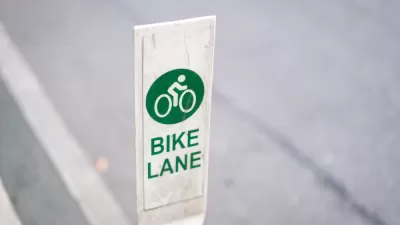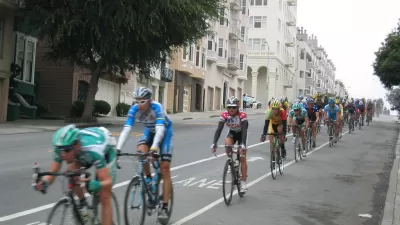2019 was the first year in which New York City's Department of Transportation kept affected bike lanes open during the UN's General Assembly. That should be a sign of things to come, advocates argue.

"Every year — until this one — the city shuttered Manhattan's First and Second Avenue protected bike lanes 'in the 40s' during [the] United Nations General Assembly in September," write Laura Shepard and Jon Orcutt of Bike New York. "This year, however, the city maintained bike access on both avenues — by far the most important and heavily used East Side bicycle routes."
"The significance of the change goes well beyond two avenues during a week in September. It's a sign that city government is moving away from its practice of establishing bike lanes and then ignoring them," they continue.
They argue the city should double down on that policy. For example, DOT should consider bike network operation and maintenance a priority on par with street maintenance. And it should deploy a dedicated team to enforce bike access around construction sites.
Finally, DOT needs to provide more notice to cyclists when routes close or conditions change, again on par with what it provides to drivers. "DOT issues dozens of street closure and detour notices for motorists every week; the agency must start thinking about other street users as part of this routine."
FULL STORY: Op-Ed: DOT’s Growing Commitment to the Bike Network

Planetizen Federal Action Tracker
A weekly monitor of how Trump’s orders and actions are impacting planners and planning in America.

Chicago’s Ghost Rails
Just beneath the surface of the modern city lie the remnants of its expansive early 20th-century streetcar system.

San Antonio and Austin are Fusing Into one Massive Megaregion
The region spanning the two central Texas cities is growing fast, posing challenges for local infrastructure and water supplies.

Since Zion's Shuttles Went Electric “The Smog is Gone”
Visitors to Zion National Park can enjoy the canyon via the nation’s first fully electric park shuttle system.

Trump Distributing DOT Safety Funds at 1/10 Rate of Biden
Funds for Safe Streets and other transportation safety and equity programs are being held up by administrative reviews and conflicts with the Trump administration’s priorities.

German Cities Subsidize Taxis for Women Amid Wave of Violence
Free or low-cost taxi rides can help women navigate cities more safely, but critics say the programs don't address the root causes of violence against women.
Urban Design for Planners 1: Software Tools
This six-course series explores essential urban design concepts using open source software and equips planners with the tools they need to participate fully in the urban design process.
Planning for Universal Design
Learn the tools for implementing Universal Design in planning regulations.
planning NEXT
Appalachian Highlands Housing Partners
Mpact (founded as Rail~Volution)
City of Camden Redevelopment Agency
City of Astoria
City of Portland
City of Laramie





























